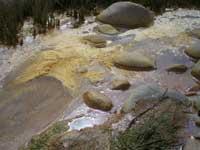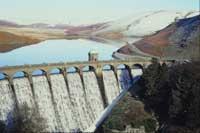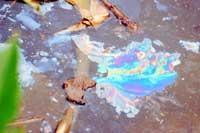Rivers from all over the world in crisis
2010/10/24 Aulestiarte Lete, Izaro - Elhuyar Zientziaren Komunikazioa

Environmental stress, agricultural discharges, pollution and invasive species. These are, among others, the factors that threaten or “aspire” to rivers. It is known that the quality of water is not good and that it directly affects the human being (for example, the supply of water for consumption), but researchers have wanted to look at biological diversity at all times. “We cannot continue to independently analyze the quality of human water and the risks to the ecosystem. We have to unite both and the systematic framework we have created allows us to look both at once,” they said.
The most prosperous future, therefore, would be in the balance between measures to meet human needs and ensure the survival of biodiversity. “Reservoirs, for example, have few negative effects on the water supply of humans. But we do not realize that they significantly challenge biodiversity, since, among other things, they hinder migration routes and alter water currents.” They warn that it must be taken into account.
The research, conducted by members of the City College of New York and the University of Michigan, has been revealed by Nature. They say that diagnosis can be of great help to prioritize political and management responses in a global “crisis” of water.

“In the industrialized world, in the water management strategy, instead of addressing the underlying serious problems, patches are being introduced to the problems that arise at the end of the chain. For example, if floods affect them, they should protect the damp plains from the bottom. Thus, it is possible that it is not necessary to build a flood containment system that is worth millions of dollars,” they add.
"Prudence"
The researchers have unified the maps corresponding to 23 types of factors that directly affect water quality, combining them later in a single index. “In the past, policymakers were busy at every moment trying to address a specific problem,” they say. But now we have it clear: the image is much richer and meaningful when any threat is taken into account at once.”
The incidence of pollution, reservoirs and dams, the excessive use of water, agricultural discharges, the loss of lagoons, the entry of invasive species… There are few factors that have been analyzed. Most of them are known. However, they have also indicated that the data provided must be treated with “prudence”. They are still unable to make a general and definitive diagnosis, they do not have enough information about other stressful factors such as pharmaceutical compounds and mining remains.

The influence of pollution, agricultural discharges, invasive species… There are many factors that endanger the rivers. (Photo: Steve Snodgrass ).
However, it has already been stated that water safety is “threatened” to a high degree and that the affected areas are many. Among them are the US, almost all of Europe, much of Central Asia, the Middle East, Indian subcontinent and Eastern China.
So far, most of the diagnoses on water quality were based solely on the analysis of local rivers. On this occasion, however, unified continental maps have been created, “regardless of the limit by which rivers flow, but with a level of stress clearly defined by each channel.”
Published in 7K.

Gai honi buruzko eduki gehiago
Elhuyarrek garatutako teknologia




